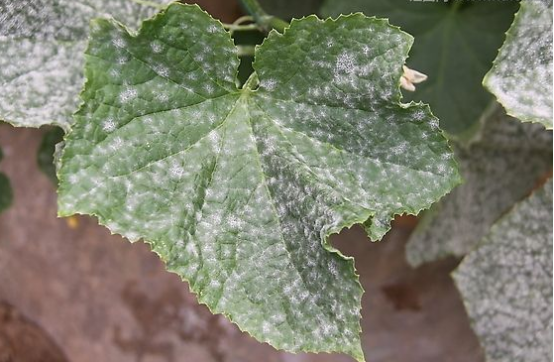Cucumber powdery mildew is a common disease, especially when the plant growth is weak in the middle and late stages. First, the symptoms Powdery mildew mainly infects leaves, stems and petioles, and generally does not harm melons. At the beginning of the disease, there were nearly round white star-shaped small pink spots on the front and back of the leaves, which spread to the surrounding and spread into pieces. In severe cases, the white powder covered the whole leaves. In the later stage, the white spot is changed to grayish white due to the mycelium, and many small black spots are produced. The leaves gradually become grayish white to grayish yellow, and the texture becomes brittle. Plants can be harmed from the seedling stage, but there are more cases in the middle and late stages. Second, the route of transmission and disease conditions The pathogens overwinter with the diseased bodies, and they can also overwinter on the melons grown in the greenhouse. The greenhouses of the melon crops are the main wintering place for the bacteria. The germs spread by air and rain and invade directly from the leaves. The suitable temperature for the generation of conidia by the pathogen is 15-30 ° C, and the relative humidity is 80%. The sheds and fields are dry after flooding or rain, and the incidence of powdery mildew is heavy, especially high temperature and drought. When alternating with high temperature and high humidity, or continuous sultry, powdery mildew is very popular. Cucumber cultivation is too dense, lack of light, extensive management, long plants, premature aging, etc. will promote powdery mildew. Third, prevention and treatment methods 1. Select resistant varieties such as Jinan Mia, Jinyan No. 4, Jinchun No. 3, Jinza No. 1, and Jinza No. 2, etc. 2, about 10 days before the disinfection of the greenhouse, after the ostomy, the mulch is covered with a shed, sealed, so that the temperature of the chamber is raised as much as possible above 45 °C for disinfection. The higher the temperature, the longer the time, the better the effect. It can also be fumigated with sulfur or chlorothalonil. 3. Cultivation and application of fully decomposed organic fertilizer, strengthen management, increase light as much as possible, enhance ventilation, reduce relative humidity in the field, prevent premature senescence of plants, and improve disease resistance of plants. 4. In the early stage of drug control, 2% agricultural anti-120 water agent 200 times liquid, 15% triazolone wettable powder 2000 times liquid, 75% chlorothalonil wettable powder 600 times liquid, 40% Fuxing emulsifiable oil 8000 times Liquid, 40% Baco WP 2000 times spray control, spray once every 7-10 days, even spray 2-3 times. Fufeng Sinuote Biotechnology Co.,Ltd. , https://www.sntextract.com